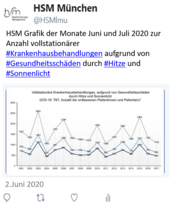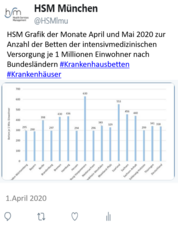Treatment by panel physicians of patients in protective institutions and homes
Analysis based on secondary data
| Authors/Editors: |
Kurch-Bek, D. Sundmacher, L. Gallowitz, G. Tenckhoff, B. |
|---|---|
| Publication Date: | 2016 |
| Type of Publication: | Articles in Refereed Journals (National) |
| erschienen in: | Zeitschrift für Gerontologie und Geriatrie |
Abstract
Background
According to the nursing statistics from 2014 a total of 2.6 million patients in Germany required nursing care of which 1.86 million received care at home and approximately 29 % (764,000 patients) received inpatient treatment exclusively in a nursing home. Reports on the number of long-term nursing care patients usually only include patients with a need of long-term care (according to § 14 German Social Code XI) confirmed by the statutory healthcare insurance. Currently, in Germany there is no nationwide report based on routine (billing) data estimating the number of patients in protective residential homes or institutions, nursing homes or homes for the elderly with nursing personnel (private institutions) based on routine data. This needs to be clarified.
Material and methods
The present analysis was based on the nationwide ambulatory statutory healthcare insurance physician (ASHIP) authorized billing data from 2014. An estimation of the number of patients in nursing and retirement homes was made based on the medical services data. Morbidity and outpatient medical healthcare details were analyzed using methods for descriptive analyses.
Results
In 2014 a total of 525,863 patients in private nursing homes received ASHIP-authorized treatment, of which 173,233 were treated exclusively in nursing homes by ASHIP-authorized physicians and 352,630 patients were treated in nursing homes as well as in ASHIP-authorized practices. In the year under investigation approximately two thirds of the patients in nursing homes consulted ambulatory practices in addition to care in the nursing home.
Conclusion
Nationwide ambulatory ASHIP billing data can substantially contribute to assessment of multimorbidities and provision of long-term healthcare by panel physicians for patients in nursing homes.
Related Links
- Zum Artikel
- PDF (1 MByte)





